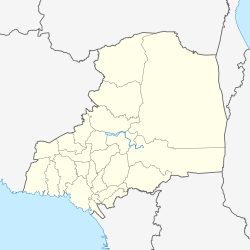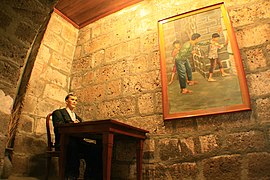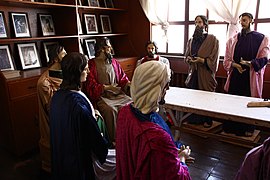Padre Dámaso Verdolagas is a fictional character in the novel Noli Me Tángere. The novel was written by José Rizal, one of the leaders of the Propaganda Movement in the Philippines. Noli Me Tángere is a controversial and anticlerical novel that exposed the abuses committed by the Spanish friars and the Spanish elite in colonial Philippines during the 19th century.
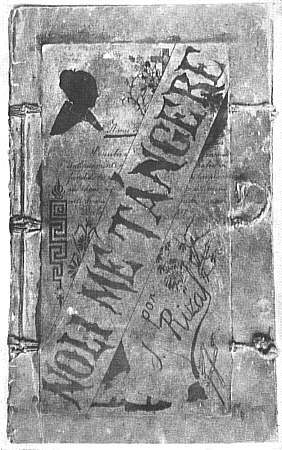
Noli Me Tángere is a novel by Filipino writer and activist José Rizal and was published during the Spanish colonial period of the Philippines. It explores inequities in law and practice in terms of the treatment by the ruling government and the Spanish Catholic friars of the resident peoples in the late 19th century.

El Filibusterismo, also known by its alternative English title The Reign of Greed, is the second novel written by Philippine national hero José Rizal. It is the sequel to Noli Me Tángere and, like the first book, was written in Spanish. It was first published in 1891 in Ghent.

Paete, officially the Municipality of Paete, is a 4th class municipality in the province of Laguna, Philippines. According to the 2020 census, it has a population of 24,945 people.

San Rafael, officially the Municipality of San Rafael, is a 1st class municipality in the province of Bulacan, Philippines. According to the 2020 census, it has a population of 103,097 people.

The Obando Fertility Rites are a dance ritual, Anitist in origin, that later became a Catholic festival celebrated every May in Obando, Bulacan, Philippines. Locals and pilgrims, sometimes dressed in traditional costume, dance and sing in the town's streets to honour and beseech Obando's three patron saints: San Pascual, Santa Clara and Nuestra Señora de Salambáo.

Joaquín González was a Filipino politician and a member of the Malolos Congress that wrote the Malolos Constitution, the first Philippine constitution, after the country declared independence from Spain in 1898. He was one of two elected delegates representing the province of Pampanga, the other being José Rodríguez Infante. Along with Felipe Calderón y Roca, the main author of the constitution, Dr. González was on a committee that debated over each article of the charter from October 25 to November 29, 1898.
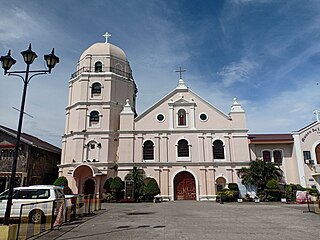
The San Pascual Baylón Parish and National Shrine of Nuestra Señora de la Immaculada Concepcion de Salambao, commonly known as Obando Church, is a Roman Catholic church located in the municipality of Obando in the province of Bulacan, Philippines. It is under the jurisdiction of the Diocese of Malolos.
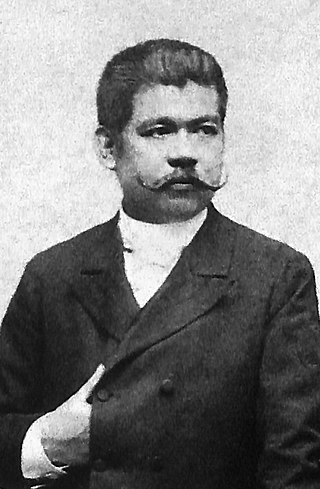
Marcelo Hilario del Pilar y Gatmaitán, commonly known as Marcelo H. del Pilar and also known by his nom de plumePláridel, was a Filipino writer, lawyer, journalist, and freemason. Del Pilar, along with José Rizal and Graciano López Jaena, became known as the leaders of the Reform Movement in Spain.
Basilio is a name of Italian, Spanish, or Portuguese origin. It is a cognate of the English name Basil. The name may refer to:

María Clara de los Santos is a fictional character in José Rizal's novel Noli Me Tángere (1887). The beautiful María Clara is the childhood sweetheart and fiancée of the protagonist, Crisóstomo Ibarra, who returns to his Filipino hometown of San Diego to marry her. After Ibarra is implicated in a fake revolution and is thought to be dead, María Clara opts to become a nun rather than marry another man. She remains unhappy for the rest of her life and her death is later mentioned in the sequel, El filibusterismo (1891).
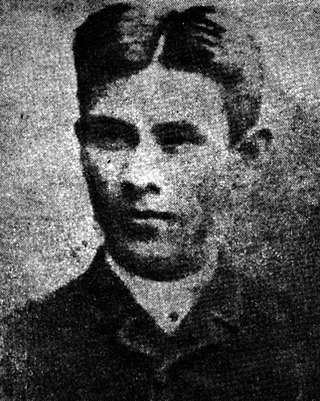
Máximo Viola y Sison was a propagandist, writer, revolutionary leader and doctor from Bulacan, Philippines.

Saint James the Apostle Parish Church, also known as Santiago Apostol Church, Plaridel Church or Quingua Church, is a 15th-century Roman Catholic church under the patronage of Saint James the Apostle and is located along Gov. Padilla street, Brgy. Poblacion, in Plaridel, Bulacan, Philippines. It is under the jurisdiction of the Diocese of Malolos. In 1961, a historical marker was installed on the church by the National Historical Committee.

The Battle of Sambat was the culminating battle of the first revolts of the Katipunan in Laguna. The battle was the final major action for the Katipunan chapter of "Maluningning" ending in the defeat of the rebels and martial law in Laguna province.
This is the timeline of the Philippine Revolution—the uprising that gave birth to Asia's first republic. The roots of the revolution trace back to the Cavite mutiny and subsequent execution of Gomburza in 1872, and ended with the declaration of independence from Spain in 1898.

The Battle of San Rafael fought between Filipino revolutionaries under the leadership of Anacleto “Matanglawin” Enriquez against the Spanish army headed by Commandant Lopez Arteaga.

Noli Me Tangere is an opera in 3 acts by Felipe Padilla de León with libretto by Guillermo Tolentino. The opera was closely based on a novel by José Rizal by the same name. The opera was sung entirely in Tagalog and is considered as the first full-length Filipino opera.
Philippines National Historic Landmarks is a registry of historic sites in the Philippines that have been officially declared by the Philippine Registry of Cultural Property.

Maria Clara at Ibarra is a Philippine television drama fantasy series broadcast by GMA Network. The series is based on the novels Noli Me Tángere and El Filibusterismo by José Rizal. Directed by Zig Dulay, it stars Barbie Forteza, Julie Anne San Jose and Dennis Trillo. It follows Klay Infantes, a Gen-Z nursing student who gets transported into the setting of Noli Me Tangere and El Filibusterismo.

